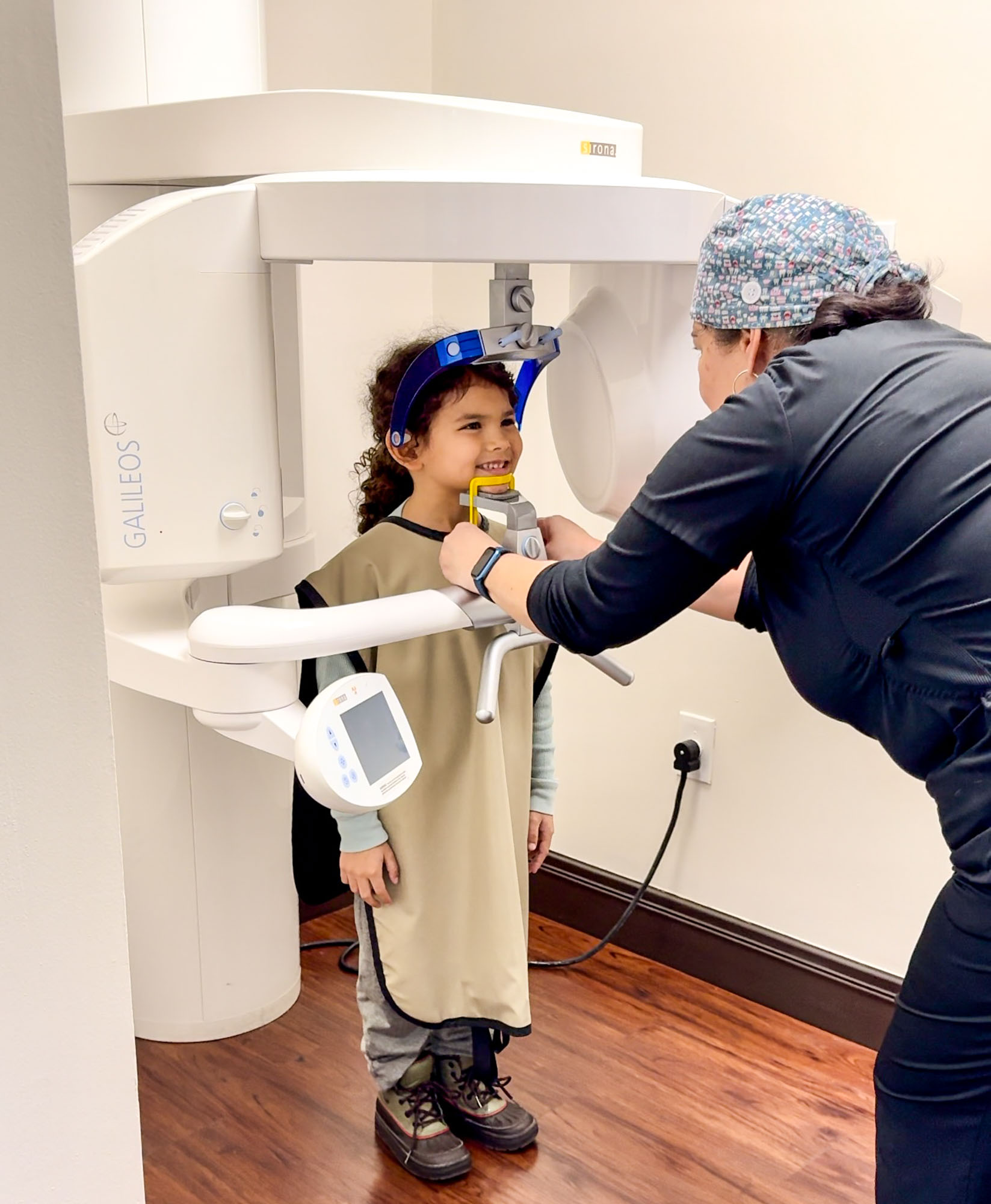Prioritizing Airway Health in Children

Let’s take a deep dive into understanding and nurturing our children’s airway health—an often overlooked yet crucial aspect of their well-being. This is not something to ignore or neglect. The airway, the conduit for the breath of life, plays a vital role in ensuring proper oxygen intake, supporting efficient breathing, and promoting quality sleep.
What is the Airway?
The airway is the passage through which air moves into and out of the lungs. The airway is not just a passage; it’s a lifeline. It is the intricate system through which air seamlessly moves into and out of the lungs. A healthy airway is the cornerstone of optimal breathing and overall wellness. An unobstructed and healthy airway ensures adequate oxygen intake, supports efficient breathing, and promotes quality sleep.
Understanding the Airway’s Anatomy and Functions
- Nasal Passages: Filters and Humidifies: The nose acts as a natural air purifier, filtering out impurities, and humidifying the air before it reaches the lungs. This ensures that the air our children breathe is clean and optimally moisturized, enhancing oxygen intake.
- Throat (Pharynx): Shared Path for Air and Food: The pharynx is a dynamic crossroads where air and food converge momentarily. This shared path is crucial for swallowing, an essential function for our children’s nutrition and respiratory well-being.
- Larynx (Voice Box): Houses Vocal Cords: Beyond its role in speech, the larynx is a guardian of vocal cords, playing a pivotal role in clear articulation and effective communication.
- Trachea (Windpipe): Structural Integrity: The windpipe ensures the structural integrity of the airway, serving as a resilient conduit that guides air to the bronchi, contributing to stable and efficient breathing.
- Bronchi and Lungs: Facilitating Air Exchange: The bronchi and lungs are not merely organs; they are dynamic tubes facilitating the exchange of life-giving oxygen and carbon dioxide, supporting the respiratory function that sustains life.
Let’s explore the various components that make up the airway.
Functions of a Healthy Airway
A well-functioning airway quietly champions its role, diligently ensuring:
- Efficient Oxygen Intake: The nasal passages, with their intricate design, optimize oxygen intake by filtering out pollutants and humidifying the air, providing our children with the purest and most nourishing breath.
- Proper Breathing Patterns: The entire airway system works together to support proper breathing, making sure that each breath flows in a rhythmic dance of inhaling and exhaling, crucial for sustaining life.
- Clear Speech and Vocalization: A healthy larynx allows our little ones to express themselves with clarity and confidence, contributing to their social and emotional development.
- Quality Sleep and Overall Health: The interconnectedness of the airway and sleep is profound. An unobstructed airway reduces the risk of sleep apnea, snoring, and restless sleep, laying the foundation for a restful night crucial for growth and development.
Common, But Not Normal: Airway Obstructions
As vigilant parents, it’s essential to recognize obstacles that may hinder our children’s airway function:
- Enlarged Tonsils and Adenoids: Tonsils and adenoids are part of the body’s immune system, stationed at the back of the throat and nasal cavity. When they become enlarged, often due to recurrent infections or allergies, they can obstruct the airway. This enlargement can lead to difficulties in breathing, especially during sleep, and may contribute to issues like snoring or sleep apnea.
- Nasal Congestion: Nasal congestion, a common issue in children, occurs when the nasal passages become swollen or blocked. This can result from allergies, infections, or anatomical factors. When the nasal passages are congested, the airflow is restricted, making it challenging for your child to breathe through their nose. As a consequence, they resort to mouth breathing, impacting the overall health of the airway.
- Malocclusion (Misaligned Bite): Malocclusion refers to an improper alignment of the upper and lower teeth when the jaws are closed. This misalignment can affect the development of the jaw and facial bones, potentially leading to a constricted airway. As the jaw plays a crucial role in maintaining the structure of the airway, any misalignment may contribute to airway restrictions, affecting both breathing and overall oral health.
- Deviated Septum: The septum is the cartilage that separates the nostrils. A deviated septum occurs when this cartilage is displaced to one side, creating an uneven nasal passage. This asymmetry can impede the smooth flow of air, causing difficulties in breathing through the nose.
Recognizing these common airway obstructions is the first step in ensuring the well-being of our children. Timely identification and intervention can help address these issues, promoting unobstructed airflow and, consequently, optimal airway health. If you observe persistent symptoms or suspect any of these obstructions, seeking guidance from an airway-certified healthcare professional is crucial for a comprehensive evaluation and personalized care plan.
Airway & Sleep Connection
Understanding the intricate connection between airway health and sleep quality is paramount:
- Sleep Apnea: Obstructed airways may lead to sleep apnea, where breathing temporarily stops during sleep, disrupting the natural sleep cycle.
- Snoring: Snoring, often a sign of restricted airflow, can be indicative of underlying airway issues affecting sleep quality.
- Restless Sleep: An unhealthy airway can contribute to restless sleep, impacting the rejuvenating benefits that quality sleep provides.
- Frequent Wakings: Children with compromised airways may experience frequent wakings during the night, leading to fatigue and potential developmental challenges.
Strategies for Airway Wellness
Now that we’ve unraveled the intricacies of the airway, let’s explore proactive measures to nurture its health:
- Airway Assessment: Schedule a visit to an airway-certified dentist. These specialists can identify potential issues early on, ensuring prompt intervention and optimal airway development.
- Nasal Breathing: Encourage nasal breathing, a simple yet powerful technique. Nasal breathing filters and humidifies the air, promoting a healthier airway and respiratory system.
- Oral Health: Address dental issues such as misaligned bites or crowded teeth. These can impact the jaw and airway.
- Air Purification: Integrate air purifiers into your home environment to minimize airborne pollutants and allergens. This is huge! This safeguards your child’s airway against external threats, ensuring a clean and nurturing atmosphere.
A Urgent Plea: Prioritize Airway Health
As a fellow parent, I encourage you to consider your children’s airway health for their overall well-being. Taking proactive steps now can make a positive impact on their health in the long run.
Having faced challenges with obstructed airways in some of my own children, I understand the significance of addressing these issues early on. To find an airway-certified dentist near you, visit AirwayCircle.com. These professionals are dedicated to ensuring your child’s optimal airway health and can provide the necessary expertise for proactive care.
In wrapping up our discussion on airway health for our children, it’s crucial to emphasize the significance of this often-overlooked aspect of their overall well-being. Recognizing potential obstructions, such as enlarged tonsils, nasal congestion, malocclusion, and a deviated septum, empowers us as caregivers to take proactive measures.
As parents, we understand the depth of our love for our children and the desire to provide them with the best possible start in life. Acknowledging the importance of a healthy airway is a fundamental step in this journey. Whether you’ve noticed subtle signs or simply wish to stay ahead in preventive care, taking action now is an investment in their long-term health.
Remember, this isn’t just about breathing; it’s about fostering an environment where our children can thrive.
